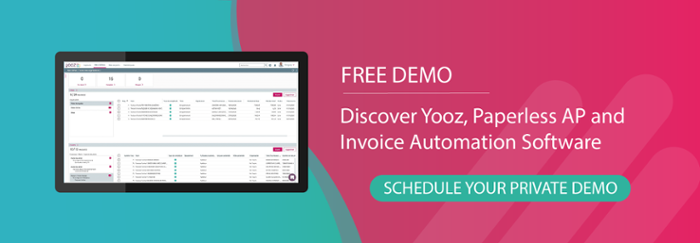As a business you do brilliant work every single day. Your operations work like a well-oiled machine, and an efficient workforce is helping maintain growth and regularly hit new highs. However, this can all change in a heartbeat if people, suppliers, and vendors don’t get paid. They say money makes the world go round, but that doesn’t happen unless the invoicing cycle flows smoothly including Purchase Order (PO) numbers organised, invoices processed, and payments sent.
The problem of billing within businesses is more extensive than you’d think. Ever received a late payment or wrong invoice? Although it might be a genuine mistake some of the time, most of the time it comes down to teams manually processing what are vital functions of a business. Think of it this way; you wouldn’t blindly send a payment to a stranger, yet that’s one of the risks many businesses are taking by not providing the proper resources and technology to their finance departments to help prevent these errors from occurring.
Not only is failing to take precautions a security risk, it’s also a huge waste of time, with each business wasting hundreds of hours every year with manually processing both old and new invoices. In fact, according to the 2021 international market research study "The State of Automation in Finance," UK businesses spend an average of 43 hours every month managing vendor invoices and then wait an additional 33 hours just for invoices approval. Essentially, finance departments are spending more than three days of their time every month doing this when the entire process could be reduced to mere minutes.
Besides being a waste of time, manual processing in Accounts Payable (AP) are also inaccurate and could have a potentially harmful impact in both client and supplier relationship management. Also, according to "The State of Automation in Finance," 26% of the businesses surveyed admit to having made errors in invoices in the past, while delays in validating invoices has led to late payments for an additional 38%. While larger businesses may have the ability to compensate for the reduced cash flow, many small to medium-size businesses will be much more affected and risk staying in business as well as affecting their supplier operations. In this time of rising expenses, transportation issues, and supply shortages, every business should want to keep their suppliers happy.
The good news is that while the problem of invoice processing has serious knock-on effect, businesses needn’t stick their heads in the sand hoping it will go away. Automated invoice processing tools are helping not just reduce the pain of invoicing on teams, but are making them more productive, more accurate, and more secure.
What does invoice tracking software do?
One of the biggest downsides that finance teams utilising manual invoicing processes have is visibility. Once an invoice is sent out, departments typically have no clue as to the status of the invoice, whether there’s any inaccuracy with the information, or even if it’s stuck in the approvals process. Finance teams also don’t know when an invoice has been paid unless they specifically look in the accounting system or when management reviews accounts at month-end. When you’re having to report on cash flow, not having the option of real-time access to day-to-day financial reporting can lead to inaccuracies based on outdated information.
This is exactly where invoice tracking software comes in. The software is a useful tool which has the primary objective of finding and catching any duplicate, late, or inaccurate payments at the start of the invoicing process. The initial process for creating invoices stays the same, and they can still come into the system via any format (PDF, Word docs etc.). What invoice tracking does is assign each document a unique code so that information such as vendor details, tax codes, and invoice status can be traced at each step of the process. By adding a payment deadline, teams can make sure payments are sent on time.
The software helps finance teams understand the status of invoices in real-time: if it has been sent, where it is in the approvals process, who it is currently sitting with, and if payment has been sent. Plus, because it is fully automated, all of this information is available to report on quickly and in real-time. Not only do accounts payable teams gain better visibility, but they can also save time not having to track down invoices, with automated reminders that can be sent to vendors and suppliers after a certain time when payment isn’t received.
Even better, invoice tracking software links to your current accounting systems and works in the background to automate process and information so you don’t have to concern yourself about the current status of invoices. Acting as an online project manager, the tool automatically adds and records invoice data in the accounting system, which means no more hours spent manually inserting information yourself as well as reducing the possibility of producing any errors.
How does invoice tracking software help?
To further expand on the many benefits from utilising invoice tracking software, consider how the following helps business operations:
1. Visibility: Live tracking throughout the invoicing process based on real-time data means AP teams can get instant reports into the status of invoices and the approvals process. This is especially important with hybrid and remote workforces, teams working in different parts of the country, or those based across different time zones. Not only can this help reduce the chances of bottlenecks appearing, but it can also make sure they don’t happen in the first place because action can be taken proactively as soon as issues start to develop.
2. Control: Having access to real-time information means finance leaders can make better, more-informed decisions immediately, and not in a month’s time when information is manually gathered, analysed, compared, and presented. Plus, by being able to see where exactly an invoice is at any given time, finance leaders can take back control to make sure payments coming out of the business are accurate and on time.
3. Time: Supported by automation, accounts payable staff stand to gain back hours of their time every month that is currently being wasted on chasing down or filing invoices. Instead, staff time can be focused on more business-critical tasks such as managing staff or financial reporting, and employees can feel both liberated and empowered knowing that they have a tool which can take away the need to track the status of invoices which, although important, don’t make staff feel like they are contributing to business goals.
4. Cost: By cutting down on time taken to manage, track down, transport, or store invoices and payments, businesses can reduce wasted spend and staff hours. Used as part of an end-to-end automated Accounts Payable solution, businesses can also lower their cost-per-invoice processed and use cost savings to reinvest into the business or pass onto customers or suppliers.
5. Accuracy: The automated features provided by invoice tracking software means you can better keep tabs on and get a full picture of where invoices currently stand as well as being confident that the information provided is accurate. By using a more accurate system, you can also defend better against instances of invoicing fraud where duplications are sent from known or unknown sources in the hope of taking money out of the business.
6. Relationships: Asking vendors and suppliers for money owed isn’t a nice thought, and it can actually cause a lot of stress for staff working in accounts payable. By taking out the need to chase down payments, you can increase morale within the finance department while also maintaining relationships with third parties by making sure payments are paid on time or are followed up on in a timely manner.
Finally, it is important to mention that there are also benefits for using invoice scanning software when it comes to legal compliance, such as with the Making Tax Digital (MTD) legislation. Being MTD compliant means being able to electronically store and produce historical invoicing records at any given time, so by implementing a full track and trace solution of all company, vendor, and supplier invoices, you’re also making sure you’re ready for auditing purposes as well as when you need to do historical research of your own.
Is invoice tracking and invoice processing software different?
The main difference between invoice tracking software and invoice processing software has to do with the level of capabilities within each system. While tracking software can show live details on the status of invoices, it won’t actually help speed up the invoicing process unless supported by automated Accounts Payable solutions such as invoice processing software. So, although teams can get all of the benefits stated above, there are even more that can be uncovered by automating additional Accounts Payable processes or, even better, the entire process.
Automated invoice processing essentially brings an end to the hundreds of hours teams spend on unnecessary and obsolete manual tasks by automatically extracting invoice data entered into finance and ERP systems. Whereas managing invoices and approvals used to take a significant chunk of time, processing payments with automation in the invoice processing cycle can be done almost instantly. Plus, it involves very little manual intervention at all - usually only if fraud or inaccuracies have been highlighted - or when finance leaders have to review and validate payments.
As the invoicing solution becomes more widely adopted within finance departments (and it is), automated invoice processing software is playing a critical role in business performance, efficiency, and productivity. The use of automated invoice processing software is providing businesses with better accuracy, security, and speed, and by taking away manual data entry and admin-type tasks in the invoice processing cycle, reduce the chance for errors and fraud as well as support business growth.
Choosing the best invoice scanning software
The use of automated invoice tracking software is the best and only way to efficiently keep an eye on the status of invoices and payments however selecting the right software for your business can be tricky. This is especially true thanks to the big and growing market for automated Accounts Payable software systems, and it can be difficult to know where to start. For example, choosing the best software can not only depend on the level of invoicing (the amount of invoices you receive and process), but also the size of your Accounts Payable department, where it’s located, and even which accounting or ERP system it uses.
Then there’s functionality to consider. Any software system will likely be used by a wide range of skilled finance staff, from junior staff right up to CFOs and finance leaders, so it needs to be flexible, easy-to-use, and understandable without needing frequent ongoing additional training. What’s more, the system needs to be able to plug in and play with current accounting and financial software, as any custom integrations will be costly and delay receiving the benefits even longer.
Selecting the best software for your company also depends on what kinds of invoicing-related features desired. For example, some businesses will have highlighted a specific problem within their invoicing process and need to resolve it using invoice tracking software, while others will need an end-to-end Accounts Payable solution capable of automating entire finance functions.
You should also consider the experience of the provider, the level of support offered (just in case), and even the flexibility offered by a cloud-based solution.
While it sounds like there are a lot of variables involved (imagine the different requirements between a large business and a freelancer), fact is that there’s no denying the benefits of moving towards and the operational freedom offered by automated systems to help keep invoices on track and payments on time.
Read our guide here for more information on invoice automation software or request a personal demo.
Optimize your workflow with Yooz's advanced invoice tracking software
Take control of your finances with Yooz's innovative invoice tracking software, designed to streamline your accounts payable process. Yooz leverages cutting-edge AI, Deep Learning, and RPA technologies to automate invoice tracking tasks, ensuring efficient and accurate management of your financial data. With Yooz's real-time AI performance, easily monitor the status of invoices at every stage of the payment cycle, from receipt to approval and payment. Trusted by top accounting firms worldwide and recognized for its innovation, Yooz stands out as the premier choice for businesses seeking to enhance their invoice tracking capabilities. Experience the power of Yooz's all-in-one platform, which integrates seamlessly into your existing systems with plug-and-play functionality. Join the ranks of enterprises benefiting from Yooz's strong and durable cloud-based solution, and elevate your invoice tracking process to new heights of efficiency and effectiveness.

-1.jpg)







